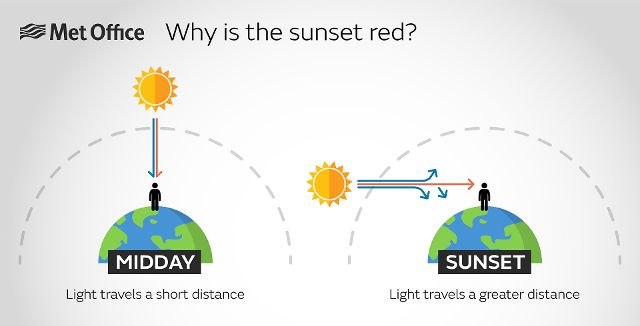Why is the sunset red?
Sunsets and sunrises can be some of the most beautiful natural spectacles, but what makes the sky turn different colours during these times?
A lesson in colour
To begin, we need to understand how we see colour. Light travels from the Sun and through the atmosphere in invisible waves. Light that looks white to us, is actually made up of many different colours of differing wavelengths. For example, blue has a short wavelength, while red is created by longer wavelengths.
Why is the sunset red or orange?
At sunrise and sunset, the Sun is very low in the sky, which means that the sunlight we see has travelled through a much thicker amount of atmosphere. Because blue light is scattered more strongly by the atmosphere, it tends to be scattered several times and deflected away in other directions before it gets to us. This means that there is relatively more yellow and red light left for us to see.
The diagram below shows that at midday, light has less atmosphere to travel through. Reaching Earth's atmosphere, it is scattered in all directions, therefore we see blue sunlight. Blue is scattered more than other colours because it travels as shorter, smaller waves. However, at sunset, light has further to travel through the atmosphere. The shorter wavelength blue light is scattered further, as the sunlight passes over a greater distance, and we see the longer wavelength yellow and red light. These effects are a cause of Rayleigh Scattering.



